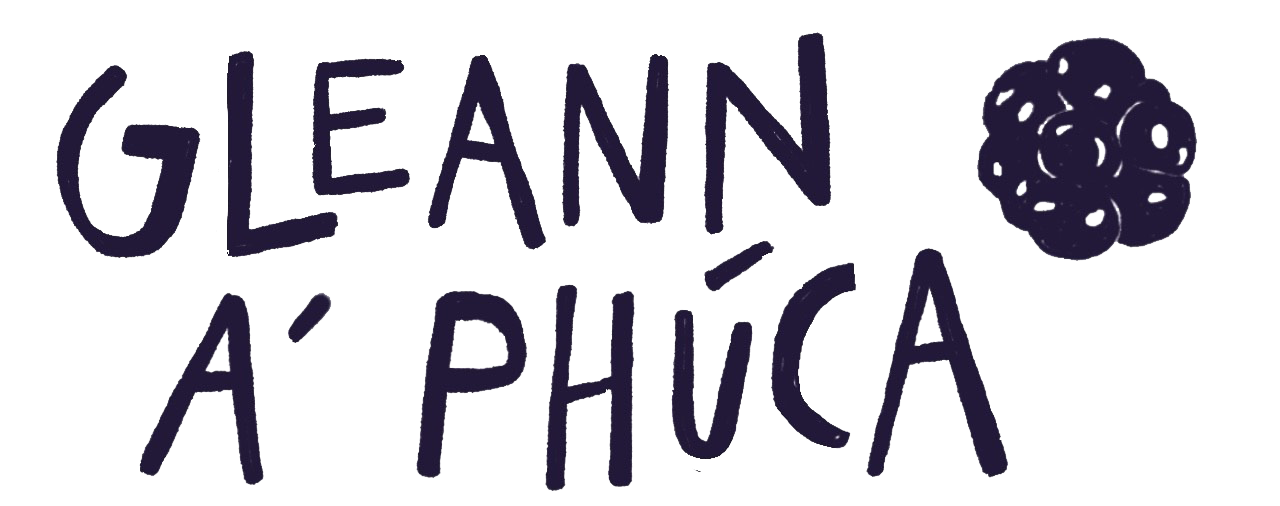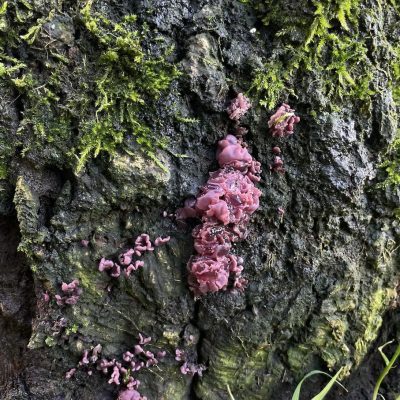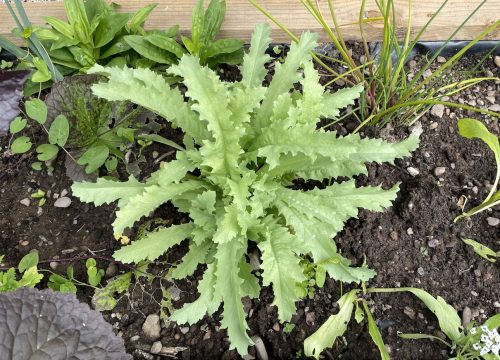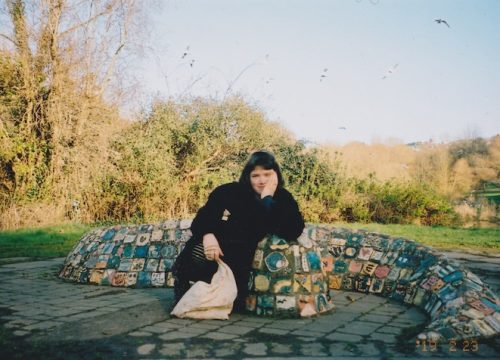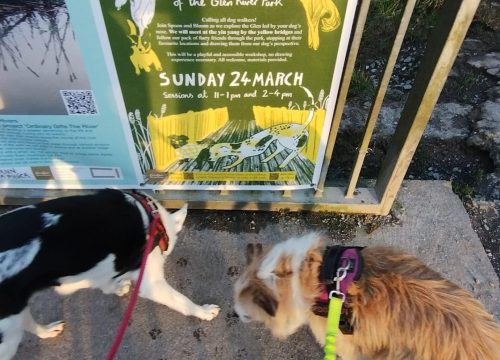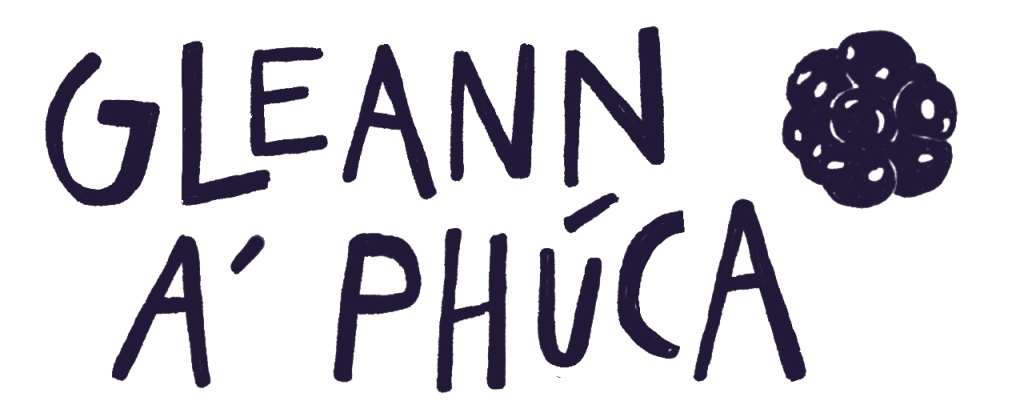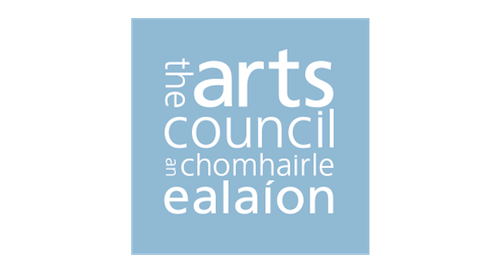Gathering, gleaning, divining
The Glen Water Day 5 November 2023 ~ gathering, gleaning, divining
What a beautiful November Sunday, under blue skies with golden leaves above and below.
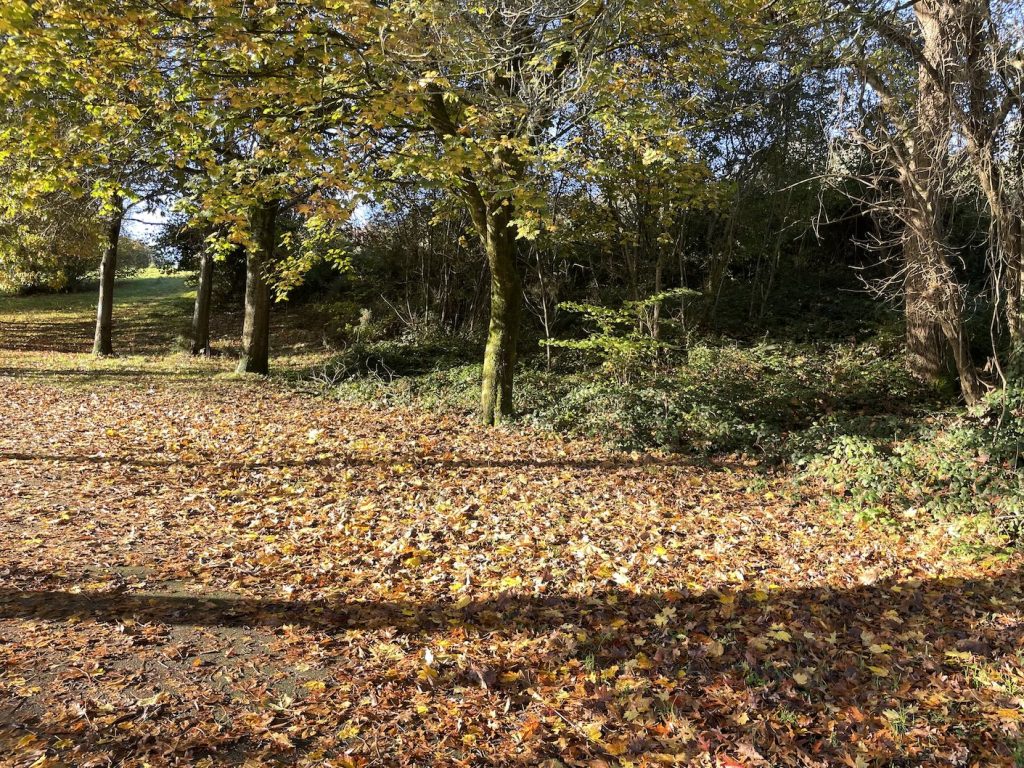
We walked the north bank of the river from bridge to bridge – as Jo Goodyear forewarned, there was not much of a workout involved; we were being slowly, surely lured in and attuned to the plants at the water’s edge. Alder, Ash, Lime, Willow, Plantain, Blackthorn, Hawthorn, Meadowsweet, Bulrush were the cohort for the day.
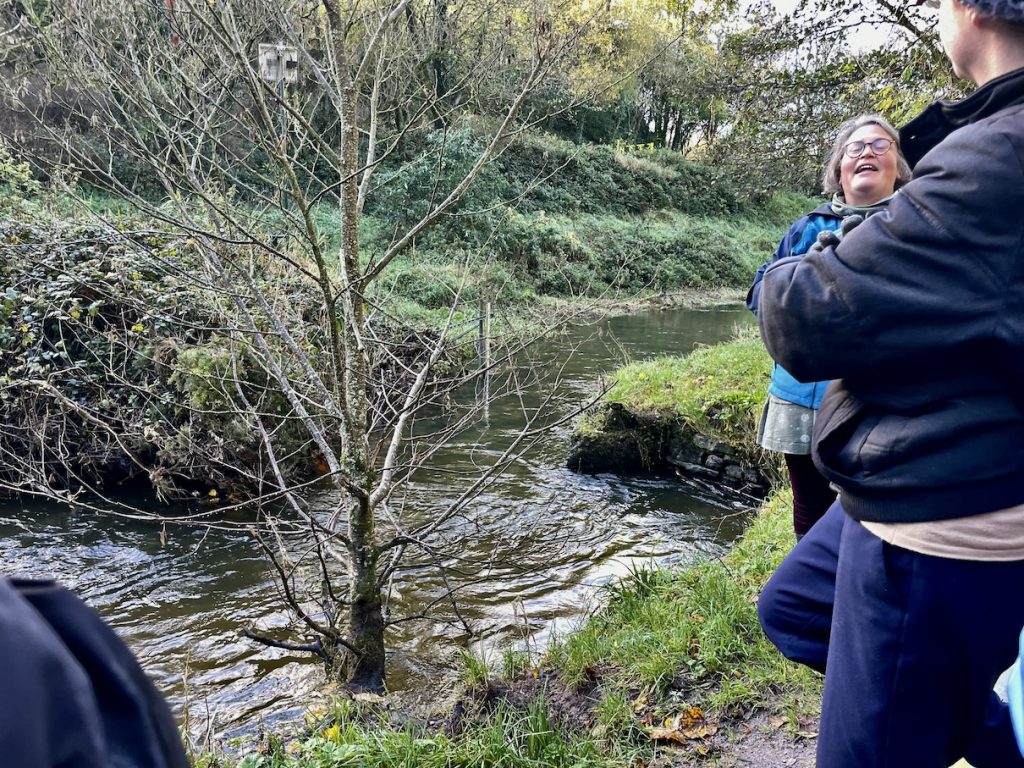
We heard about the Alder, stopping at the one in the whirlpool by the bridge. By having their feet in the river The Alder has the ability to procure nitrogen through the nodules on their roots in water as well as the earth, keeping them well nourished over the winter and holding their male catkins close in order to flower early, and fertilise their female cones which fall into the water and are borne by the river carried to a place they will find a foothold downstream, making the Alder one of the most successful wetland trees. Humans have found a way to make the Alder work with fire, from this water loving tree comes some of the best charcoal for fuel – the warrior tree whose flesh turns red when cut.
We heard how the astringent properties of bitter barks are good for healing wounds, and used as healing plants for ‘intermittent’ fevers such as those brought on by malaria, whenever Cork succumbed, back up till the 1850s.
We learned to harvest bark only from twigs and not the central trunk; trees have their cardiovascular system just below the bark and so ‘ring barking’ cuts the cardiovascular system in two – killing the tree. Foraging must be done with respect and care for all living beings.
We talked about native and naturalised plants, and the prospect of invasive species, Lime is not native but brings its own beauty and abundance, in scent and gentle healing properties. On the other hand bracken is a native plant, which can be invasive, expanding horizontally through rhizomes, its natural habitat is in native woodlands where it would be kept in check by the forest canopy, but there is no control on cleared ground where it’s often found, like here in the Glen, here it has colonised the ridge and other areas where the gorse has been burned.
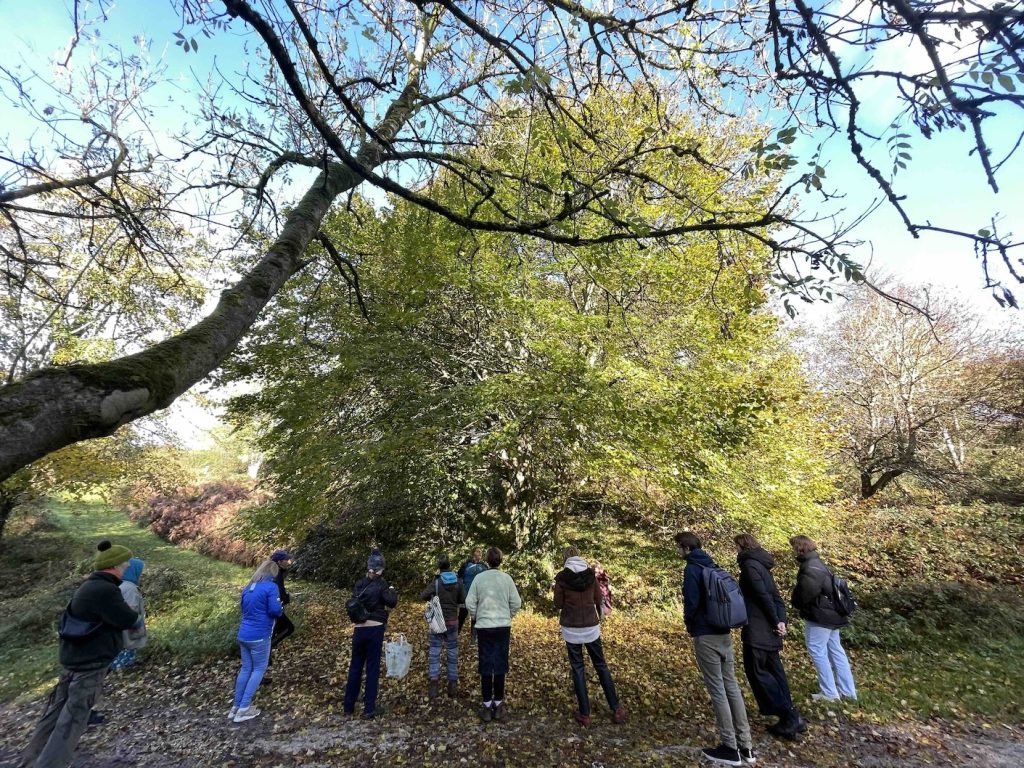
We passed the Rusty Willow keeled over in the river, sending up new shoots and rooting vigorously in the riverbed, holding space for other trees like the hawthorn, this rooting property has been observed by humans and a willow twig in water can act as a rooting hormone for other plants. The willow (salix) is also famously known for its salicin, a mild analgesic, with similar properties to aspirin. I remember my dog used to like to drink from a bowl of willow water. The Rusty Willow is a subspecies of the Grey Willow and it’s the more common variety of willow in Ireland. The Glen also has non native garden varieties of weeping willow and crack willow, that may have been planted for basket making. Willows hybridise readily and we have many native willow varieties in the Glen.
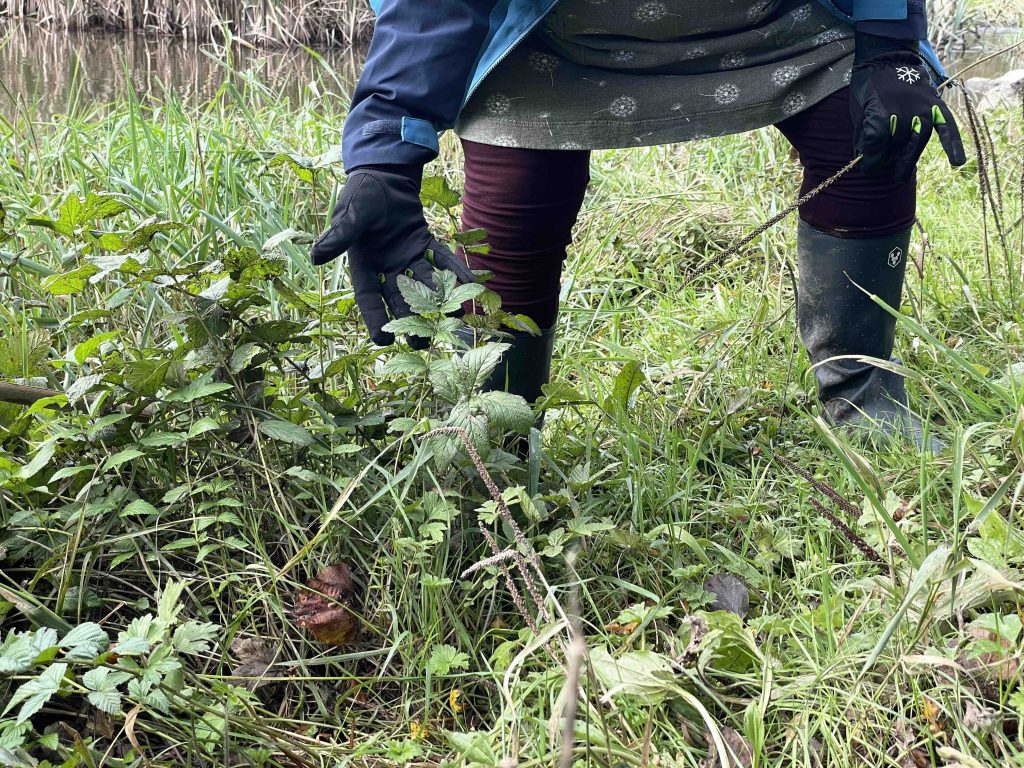
Meadowseet gets its name not from meadows but from the ancient drink mead because of its fragrant honey scented blossoms, and meadowsweet pollen was added to the honey for extra flavour during the fermenting process. We hear that wet loving plants are good for ‘boggy’ conditions in the body, like colds joint pain, arthritis and gout. I read that Meadowsweet can also ease heartburn, stomach ulcers, kidney and bladder infections.
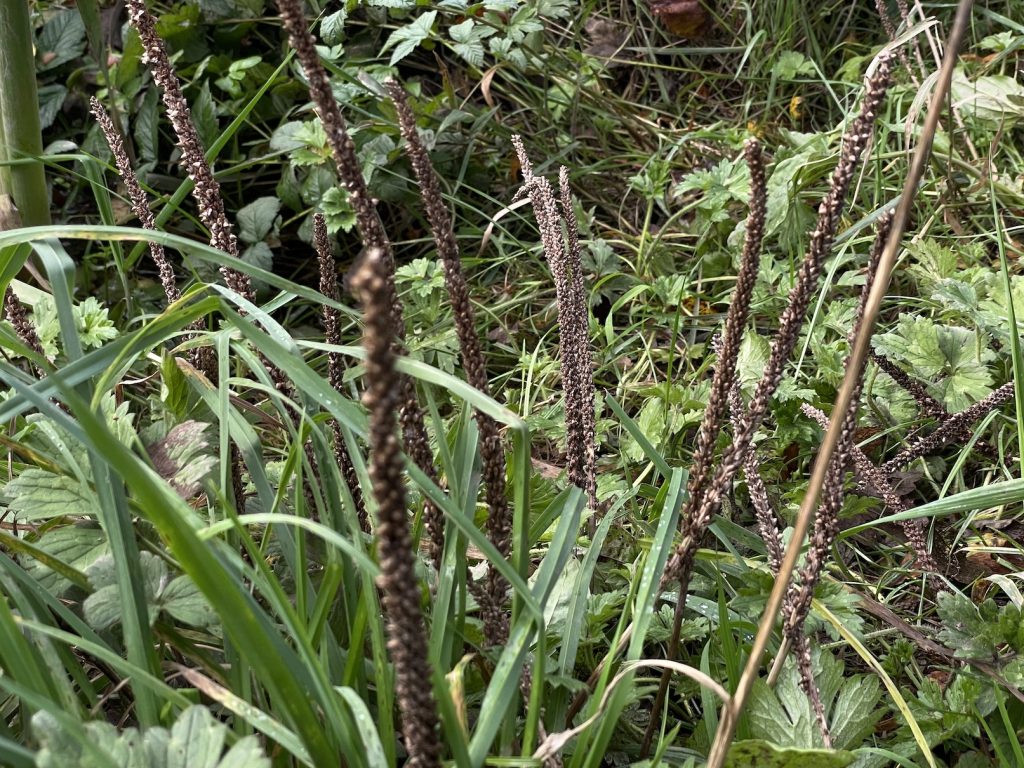
We hear that Plantain, another highly successful plant, is known as the white man’s footprint, because it flourishes in many habitats and was brought globally on the hoof of sheep in the European expansion. They contain a natural antihistamine and prove better than a dock for nettle stings, the seed heads are edible and Jo notes they have a mushroomy aroma which is present from the endogenic fungus that grows within them.
There is the lone hawthorn by the Prosto bench, these are the faery trees and venerated because of their multiple healing powers – enchanted obviously because they are more valuable to humans alive than dead, says Jo. All parts of the hawthorn can be used, one of us recall making haw leather from a stiff jam and dipping it in chocolate. Hawthorn tea is a great heart tonic and help lower blood pressure and cholesterol. This is the May blossom tree, its cousin, the Blackthorn, flowers earlier and produces sloe berries from late summer, tradition has it that sloes should be picked after the first frost. We discover as we chat that our group has observed sloe berries in early summer and the fruits are well over these days by the time the the frosts arrive in late autumn. Sadly yet another indicator of the warming planet. We hear that all black/red /blue berry fruits are good for the circulation, strengthening cell walls.
Jo directs our gaze to the Bulrushes (Reedmace) and we find that nobody here is certain if they came because they were planted, or arrived on the wind, or shoe. They would have loved the old mill ponds and they provide excellent filtration for dirty waters. Their dry ‘cigar’ heads are famously used for torches, and I have heard them called the witches spindle, most apt because of the way the seeds appear to unwind as they escape into the wind
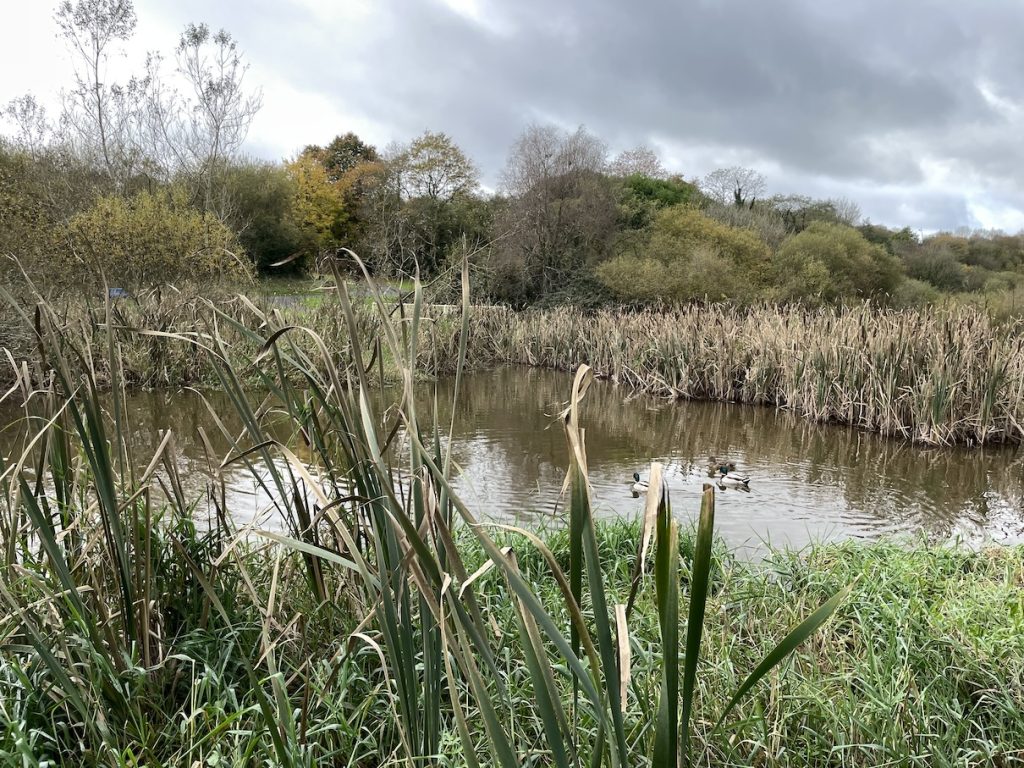
We crossed the bridges to find Elinor Rivers had set up her divining station. There was an assortment of rods and fresh hazel twigs and pendulums.
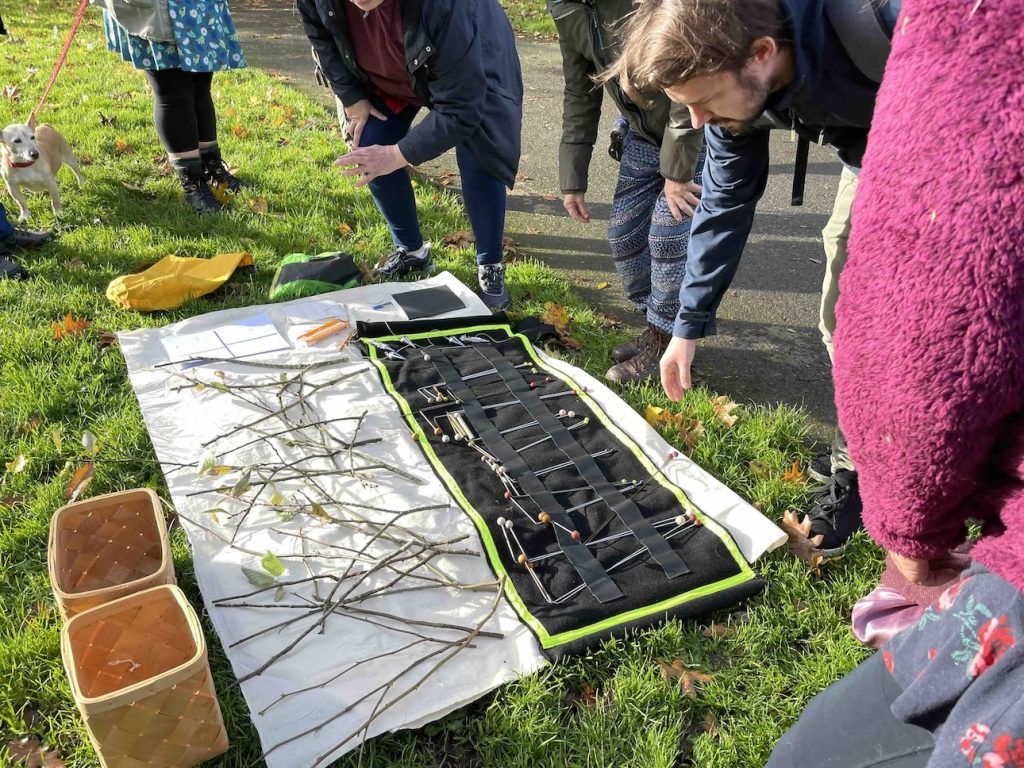
Elinor led us in some gentle Qi gong, relaxing the brain and body, feeling into our connection with water in gentle circular movements,. Finding those slow and fluid movements in a circle together created a strong connection with one another as well as tuning inwards. It didn’t take long, we were well primed for the short introduction to divining, when Elinor assured us that everyone has the innate capacity to divine, and usually the head is the greatest hindrance to successful divining. She believes that one of the most beneficial roles of divining is as “a useful tool to achieving the connected, alpha state of consciousness and a more aware connection with the natural world.” It certainly felt this way. We were shown us how to hold the rods. Balancing them in our hands with a gentle pressure on the thumb, some felt the movement straight away. Most of the group were thrilled to find they could tune in to the movement of the rods.
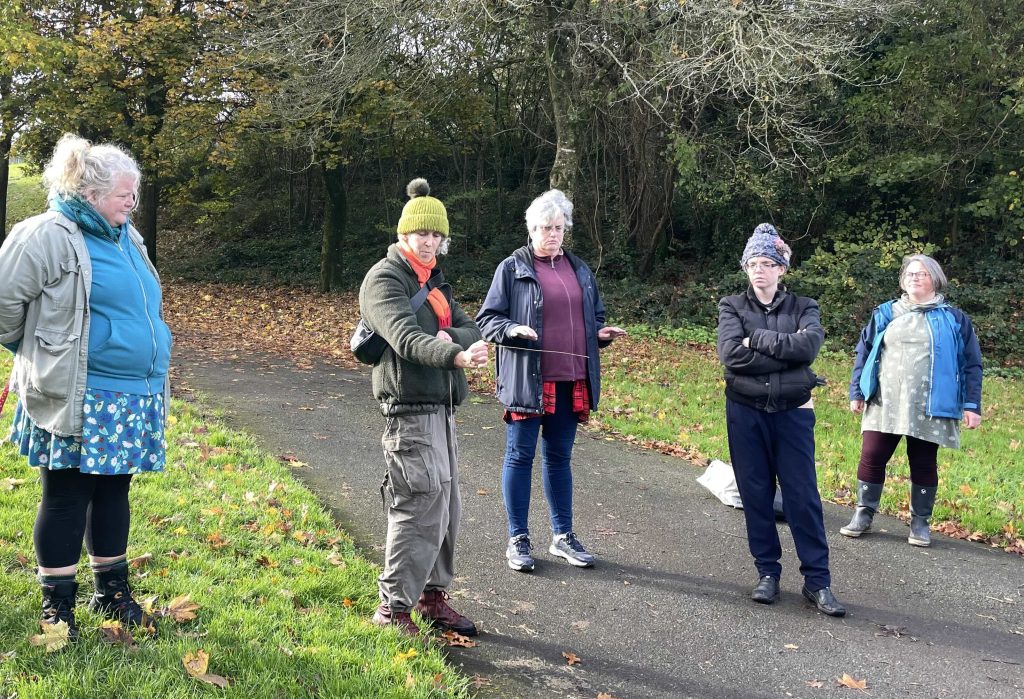
The rods cross or open wide when our body senses different currents. In this way we can ask them to give a sign for a yes or a no and take it from there…
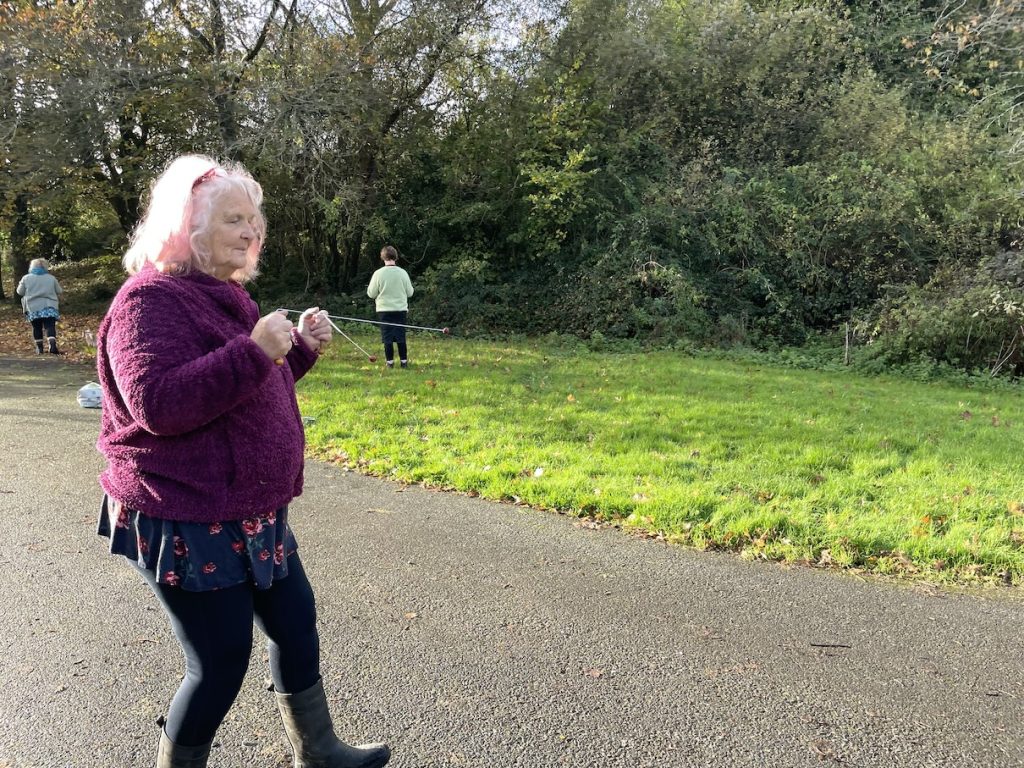
The hazels dip when they sense a change in the electromagnetic field.

Group members had clear preferences for hazel, metal rods, or pendulum divining tools, and found themselves lining up with other diviners as they got, the nod, the sweep, or the twitch along the same stretches.
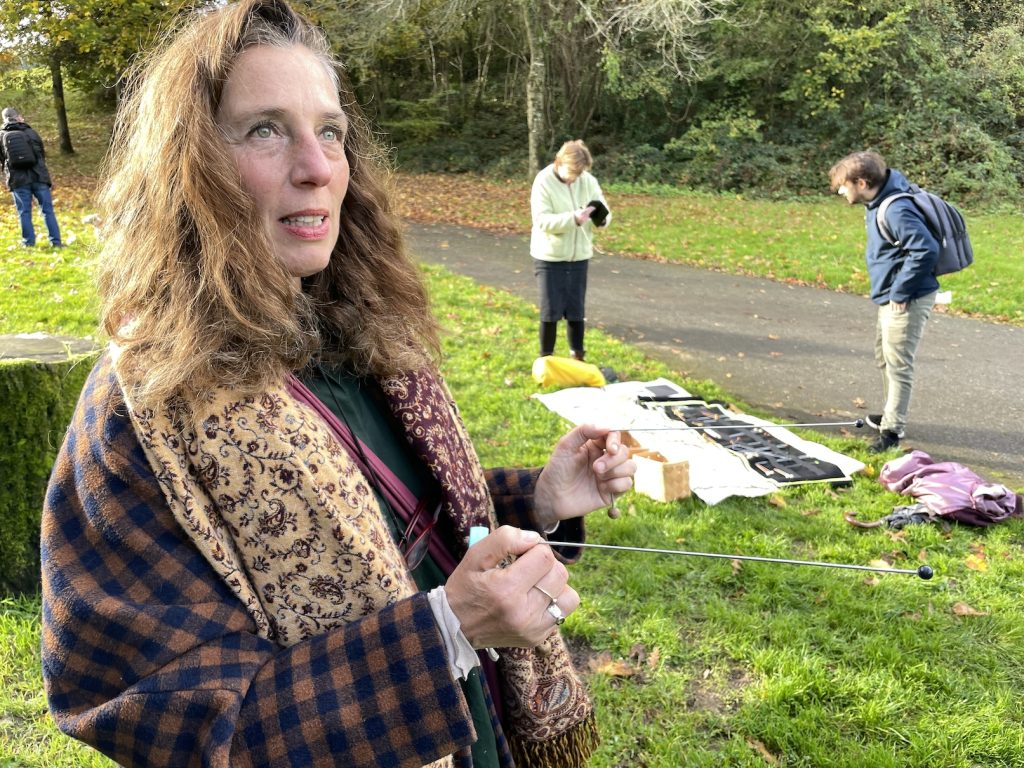
At the end of the session we gathered around the oak stump, looking at turkey tail fungi and others that had found a home on the dead wood.
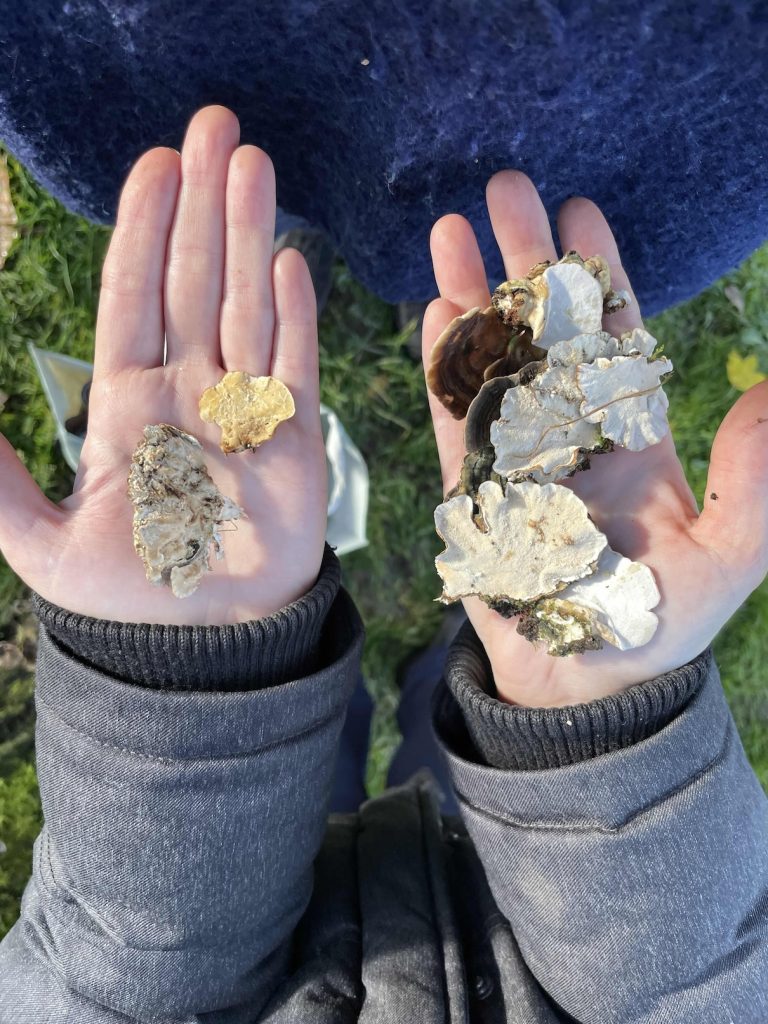
These are the hands of an enthusiastic mushroom grower. The turkey tails in the left hand are mature and ready for shedding spores for cultivation. The ones in the right hand are fresh and best for making tea – look for the fluffy white surface of the dense and soft spore pattern on the underside and a wide variety of colour in the rings on the upper side.

